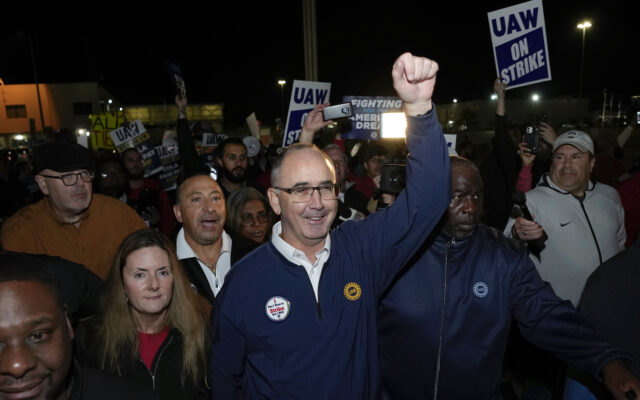Auto Workers Reach Deal With General Motors

General Motors (GM) and the United Auto Workers (UAW) union have reached a tentative contract agreement, potentially ending a six-week-old strike against Detroit automakers. The deal, similar to patterns set with Ford and Stellantis, was reached following negotiations at UAW headquarters in Detroit, involving union President Shawn Fain, GM CEO Mary Barra, and manufacturing chief Gerald Johnson. The agreement, coinciding with Fain’s 55th birthday, lasts for four years and eight months, offering 25% general pay raises and cost-of-living adjustments, amounting to over a 30% wage increase over the contract’s lifespan.
GM’s deal, though similar to agreements with other automakers, bears some distinctions. GM was the last to reach a deal, and the union intensified pressure by adding a lucrative Tennessee factory to the strike list. Nearly 4,000 unionized workers at GM’s Spring Hill, Tennessee, plant joined the strike on Saturday, alongside 14,000 workers already striking in Texas, Michigan, and Missouri.
The GM executives aimed to resume operations at Spring Hill and the profitable SUV factory in Arlington, Texas. President Joe Biden expressed positivity about the deal while boarding Air Force One back to the White House.
Additionally, 8,200 Stellantis workers in Canada briefly went on strike before reaching a deal with substantial base hourly wage increases. Meanwhile, the Spring Hill plant, a significant producer of engines for vehicles assembled in nine plants, including various pickups and electric vehicles, experienced a work stoppage.
The Ford and Stellantis agreements include significant wage increases for assembly plant workers and revive cost-of-living adjustments. They span until April 30, 2028, providing various salary increments, with new workers achieving top-scale pay within three years.
The UAW initiated targeted strikes against the three automakers in mid-September, involving approximately 46,000 workers at the peak of the strike. Discussions and agreements are reflective of a historic shift in the union’s power and significant economic gains for its members after weeks of negotiations and strikes.




